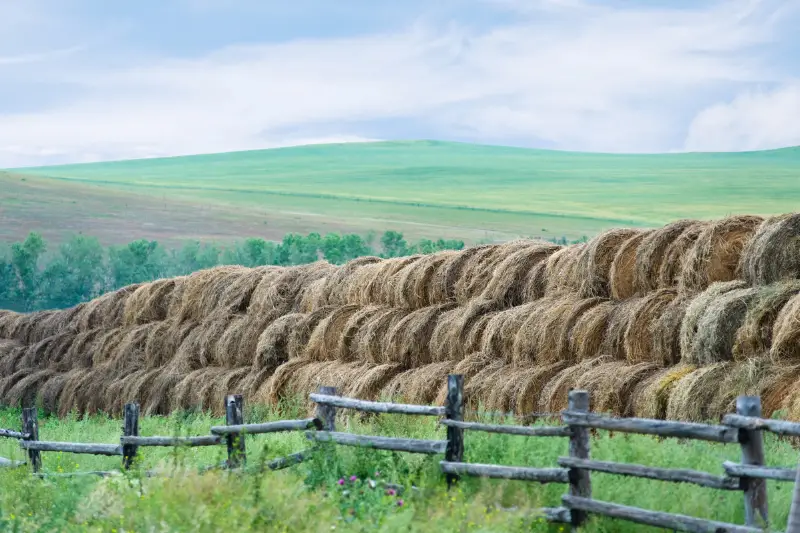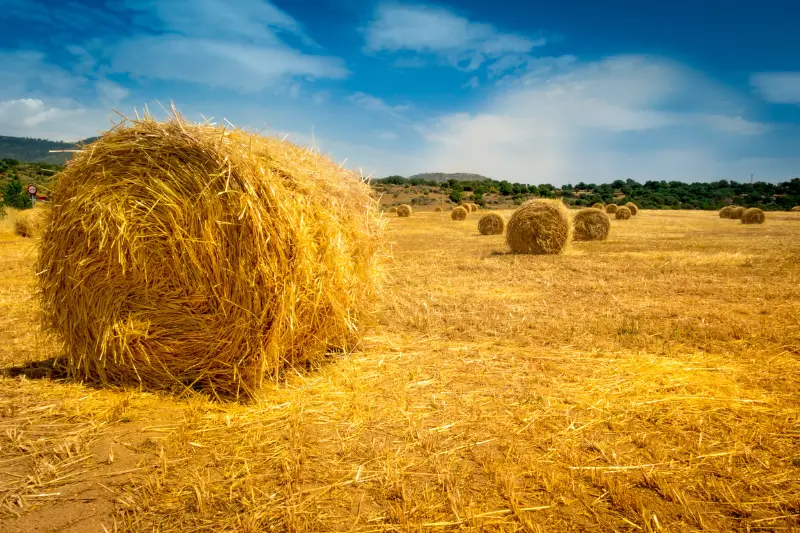Click here to get this post in PDF
The production of quality hay is essential if you want to sell it to other farmers or feed it to horses, sheep, or dairy and beef cattle. To gauge the hay’s actual value, you must examine its digestibility, palatability, and nutrient content. Furthermore, you must monitor the absence of harmful plants and other foreign materials. You must feed your livestock quality hay; otherwise, you risk subpar animal performance or spending more money on supplementation requirements.
That said, making quality hay and crop production doesn’t simply entail cutting plants and creating bails. You need to know the plants more to better understand their nutritional value and life cycle. If all this sounds strange to you, worry not. Here’s a guide outlining the tips you must follow to produce quality hay.
1. Cut Hay At The Appropriate Time
The cutting or growth stage directly affects the hay’s nutritional value. This is why you must always cut the hay at an ideal time to ensure quality hay production. If you cut the grass too early, the hay will be too wet and won’t cure properly. If you cut the grass too late, the hay will be too dry and more likely to break apart. The ideal time to cut hay is when the grass is in the early stages of flowering.
Furthermore, the most appropriate time to cut the hay depends on your livestock. For instance, hay of exceptional quality for beef-producing cows should be cut at a very early heading of the alfalfa, at an early boom, or slightly later. In contrast, the hay for dairy cows should ideally be cut during the bud stage.
2. Properly Store The Hay
Another helpful tip to improve the quality of your hay is to store it properly. This is vital to safeguard it from exposure to bad weather, which can result in significant losses both in quantity and quality. And when this happens, the losses quickly add up and end up causing you significant financial strain.
To avoid such an unfortunate thing, you can implement practical storage practices. For instance, using hay rollers to compress the harvested hay into compact bales can help for easier handling, transportation, and storage. Additionally, here are some storage tips you need to observe:
- Store your hay in a dry, well-ventilated area. This is critical because hay can spoil if it’s stored in an enclosed space with high humidity.
- Don’t store hay near any sources of heat or moisture.
- Keep hay off the ground using a hayrack or storing it on pallets to prevent it from absorbing moisture from the soil.
- Choose a dry, well-ventilated area for storage. Stack the bales in a way that allows for good air circulation. This will help to prevent mold and mildew from forming.
- If possible, store hay in a covered area to protect it from the elements.
- Inspect hay regularly and remove any that shows signs of mold or deterioration in quality.
- Cover the bales with a tarp or other type of waterproof cover. This will protect them from the elements and help to keep them dry.
3. Practice Weed Control
Weed control is a crucial part of hay production. It’s because weeds compete with the crop for water, nutrients, and sunlight and can provide a home for pests and diseases. Because of this, you need an effective weed control procedure to help improve your hay’s yields and quality. Some of the tips for weed control in hay production include;
- Cultivate regularly to remove weeds before they have a chance to seed, which is especially important in the early stages of the crop.
- Use herbicides to target specific weeds, and follow the label instructions carefully.
- Mulch around the base of the plants to prevent weed seeds from germinating.
- Keep the area around the hayfield free of debris and unwanted vegetation. This will help to reduce the chances of new weeds taking hold.
4. Observe Proper Harvesting Techniques
Harvesting hay is a delicate process that requires careful attention to detail. It can result in a bountiful crop of high-quality hay if done correctly. Some of the tips for a successful harvest you need to follow include;
- Cut the grass at the right time: Timing is everything when harvesting hay. The grass should be cut at its peak nutritional value, typically right before it flowers.
- Use the proper equipment: One such crucial piece of equipment is the sharp mower you can use for creating clean, even cuts and ensuring that the hay is aerated properly during the drying process.
- Dry the hay promptly: Once hay is cut, it needs to be dried as quickly as possible to prevent mold and mildew from developing. The best way to do this is by using a mechanical dryer or spreading the hay out in a well-ventilated area.
- Store the hay properly: Once dry, hay must be stored in a cool, dry place to prevent spoilage. An ideal storage facility would be a dark, cool barn with good ventilation.
Takeaway
Good quality hay is the key to a successful livestock operation and the difference between a healthy, productive animal and one that’s sickly and unhealthy. Because of this, you need to think of how to best produce high-quality hay for your animals or those of your clients purchasing hay. Remember the tips discussed above since these will help optimize your hay production.
You may also like: Expert Advice For Dairy Farm Entrepreneurs
Image source: AdobeStock


